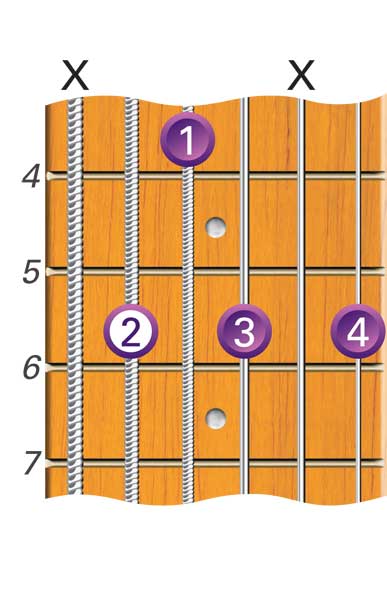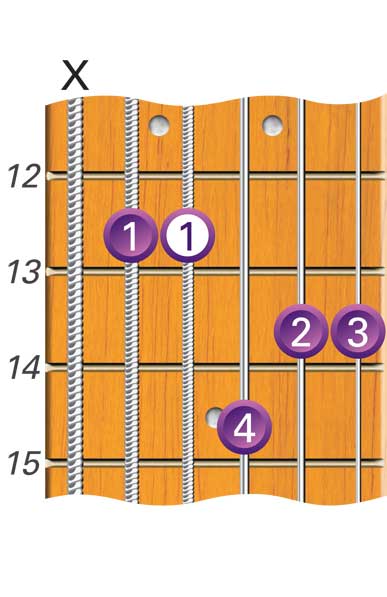
Movable Chords
Here are some movable fingerings for minor 7th chords, shown here as Ebm7. The first thirteen shapes are on groups of four adjacent strings. As always, learn each shape and then transpose it to all keys.
Ebm7

Ebm7

Ebm7

Ebm7

Ebm7

Ebm7

Ebm7

Ebm7

Ebm7

Ebm7

Ebm7

Ebm7

Ebm7

Ebm7

Ebm7

Ebm7

Here are some more movable minor 7th chord shapes which are not on four adjacent strings, but are commonly used and relate back to the five basic forms. Learn each one as Ebm7 and then transpose it to all the other keys.
Ebm7

Ebm7

Ebm7

Ebm7

Ebm7

Ebm7

Ebm7

Ebm7

Ebm7

Ebm7

Ebm7

Ebm7

Ebm7

Ebm7

Ebm7

Ebm7

Progressions Using Minor 7th Chords
The following example is a 12 Bar Blues which features minor 7th chords. Try playing these chords as arpeggios, as well as experimenting with combinations of these and other chords you know.




Here is a guitar part which uses three note voicings of minor 7th chords. The flattened 3rd and 7th degrees are essential, but either the 5th or the root can be omitted. Try this approach with other four note chords.

Minor Major Seventh


A minor major 7th chord is created by adding a natural 7th degree to any minor chord. For example, a Cm(maj7) chord contains the notes C, Eb, G and B (1, b3, 5 and 7). The following diagrams show some common open minor major 7th chord shapes.